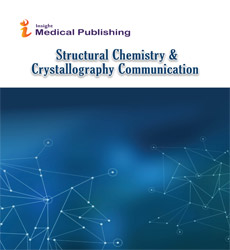Effect Mechanism of Electron Beam on Oxygen and Carbon in Silicon during Melting
H M Noor ul Huda Khan Asghar
Balochistan University of Information Technology, Pakistan
Published Date: 2022-03-27Abstract
Small amounts of multi-crystalline silicon were melted in an electron beam furnace in different experimental conditions in order to investigate the oxygen evaporation behavior during the electron beam melting (EBM) process. The oxygen content level before and after EBM were determined by secondary ion mass spectroscopy (SIMS). The oxygen content was reduced from 6.177 ppmw to 1.629 ppmw when silicon was melted completely at 15 kW with removal efficiency up to 73.6%. After that it decreased continually to less than 0.0517 ppmw when the refining time exceeded 600 seconds with a removal efficiency of more than 99.08% as shown in Fig1. During the melting process, the evaporation rate of silicon is 1.10 × 10-5 kg/s. The loss of silicon could be reduced up to 1.7% during oxygen removal process to a desirable figure, indicating EBM is an effective method for removal oxygen from silicon and decrease the loss of silicon. To investigate the carbon and silicon carbide flow behavior during the electron beam melting (EBM) process, 100 gram of multi-crystalline silicon with the contamination of SiC was melted in an electron beam furnace for five minutes. The EBM Experiment performed in the contaminated sample caused the redistribution of the impurities. The Electron Probe Microstructure Analysis (EPMA) microscopy, SEM and EDS have been utilized to experimentally observe the redistribution pattern. After EBM, carbon enriches in the form of SiC at the bottom of the ingot but not in the center. The results show that there is great temperature gradient existing in the melt during EBM, so the melt near copper crucible shows low temperature and bad fluidity. Carbon in silicon melt flows with the melt, precipitated and gathered in this area as shown in Fig1.so that it is separated due the segregation of the impurities alongside the bottom of the sample through EBM technique
Open Access Journals
- Aquaculture & Veterinary Science
- Chemistry & Chemical Sciences
- Clinical Sciences
- Engineering
- General Science
- Genetics & Molecular Biology
- Health Care & Nursing
- Immunology & Microbiology
- Materials Science
- Mathematics & Physics
- Medical Sciences
- Neurology & Psychiatry
- Oncology & Cancer Science
- Pharmaceutical Sciences
